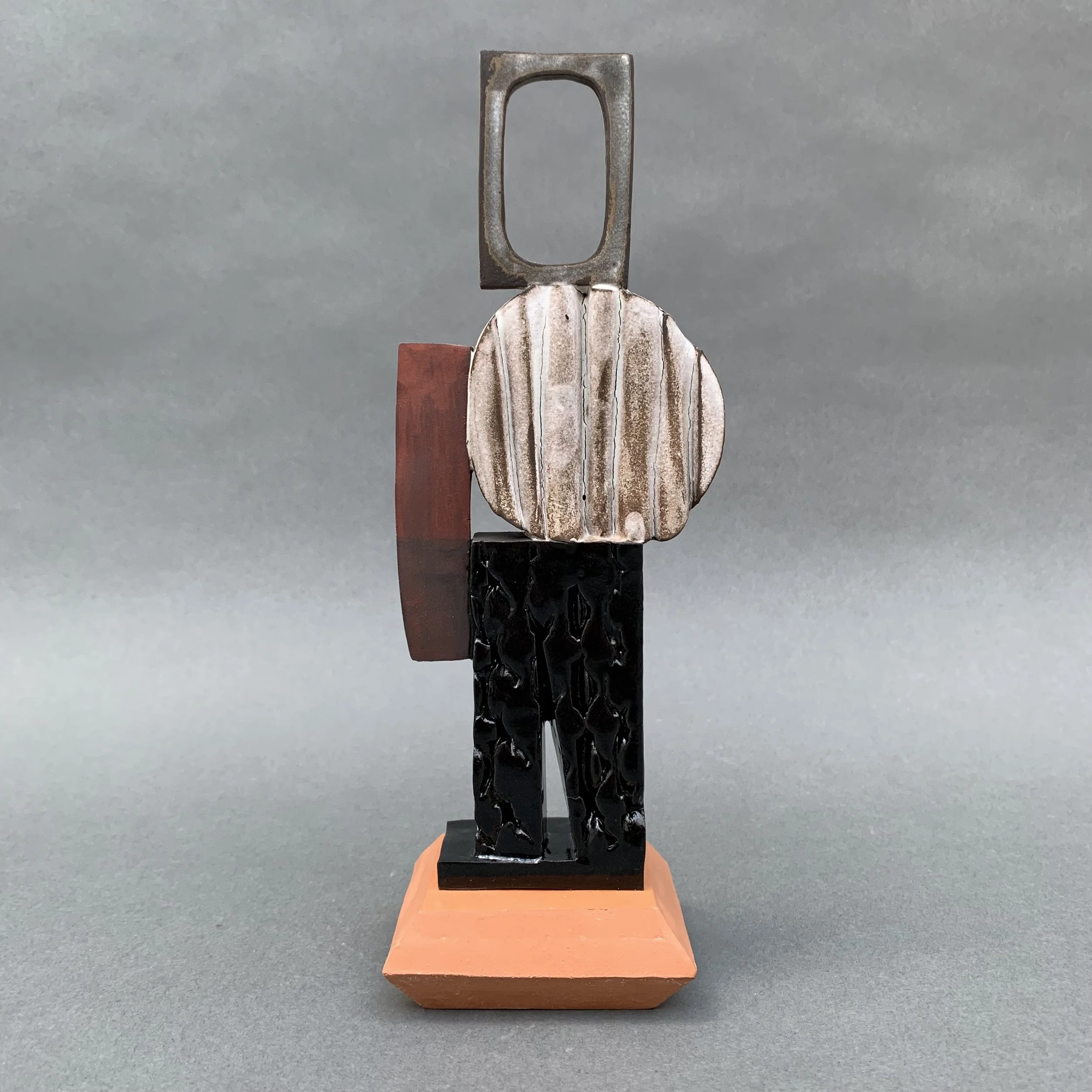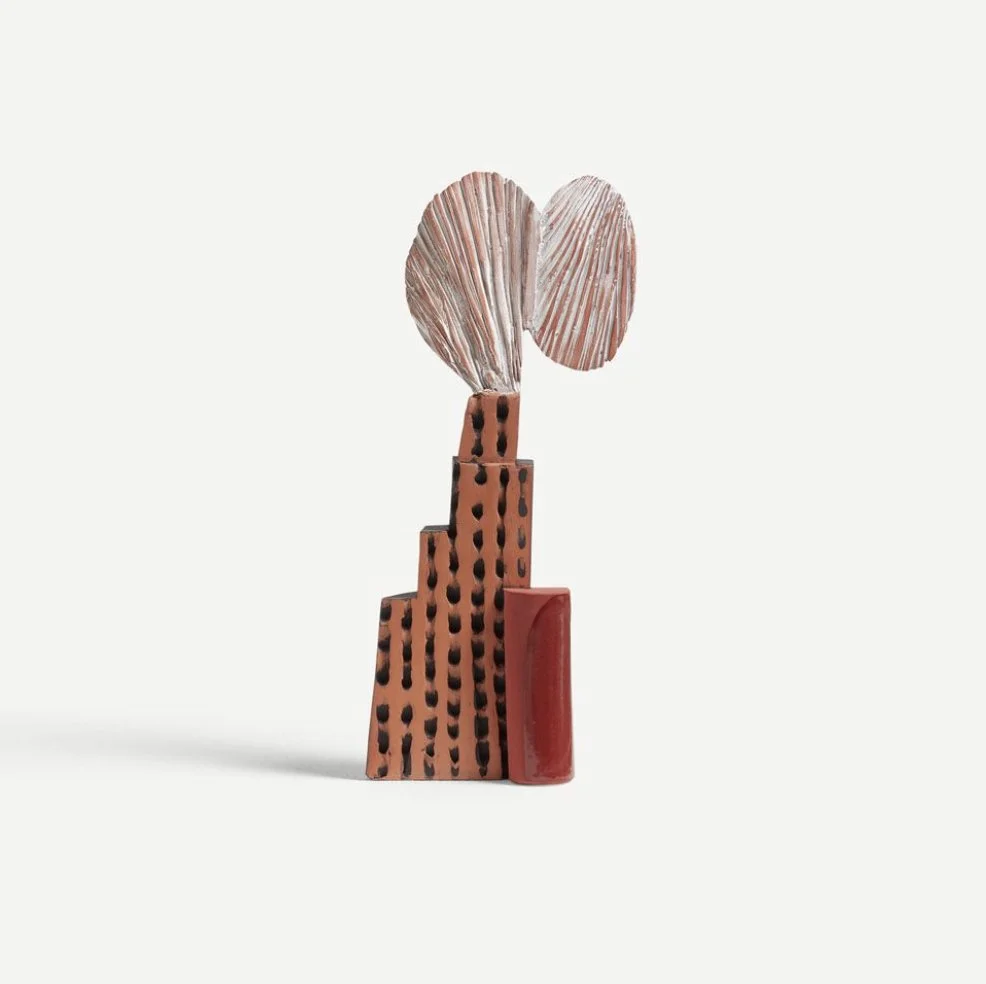Aude Van Ryn
Originally from Brussels Aude Van Ryn moved to the UK in 1991 to study illustration. After studying at Central St Martins and the Royal College of Art, she joined Heart illustration agency and worked as a freelance illustrator for 20 years. Over the last few years, being gradually drawn to ceramics, she established her own studio and followed a ceramics diploma course at CityLit.
Aude’s practice explores the aesthetic of forms found in nature, everyday objects and in the human figure through clay. Influences and visual inspiration come from various sources, from mid 20th century art movements to ceremonial objects from primitive and ritualistic cultures. Her quirky and uplifting visual vocabulary is created through texturing, cutting, assembling and composing. The pieces are intriguing and curious, yet familiar and tactile – their role or purpose undefined, allowing the viewer not to be overly guided and for the sculptures to have a language of their own.
Aude Van Ryn has exhibited her ceramic works in the UK and internationally and been featured in The World of Interiors and Elle Decoration magazines.
‘My practice explores the aesthetic of forms, found in nature, everyday objects and in the human figure through clay. Influences and visual inspiration come from various sources, from mid 20thth century art movements to ceremonial objects from primitive and ritualistic cultures.
The pieces are intriguing and curious yet familiar and tactile – their role or purpose undefined, allowing the viewer not to be overly guided and for the sculptures to have a language of their own.
My approach to work is through seeing and making, texturing clay, cutting, assembling, composing and creating alongside a visual vocabulary.’
Thames deities series
Aude’s Thames Deities series was a project based on the river Thames where she had mudlarking sessions with an archaeologist from the museum of London.
‘During my research I came across interesting french vases made in the 17th century, in the shape of women, these were made quite roughly with decorations applied as tiny spriggs (little stamps that are used to decorate the surface of the sculptures). So I created about 25 stamps based on the type of decorations found at the time and added other far more contemporary elements. These contemporary elements with which I composed are also found in the river, bits of metal tubes, metal/plastic grids, plastic discs, foam etc.’

















